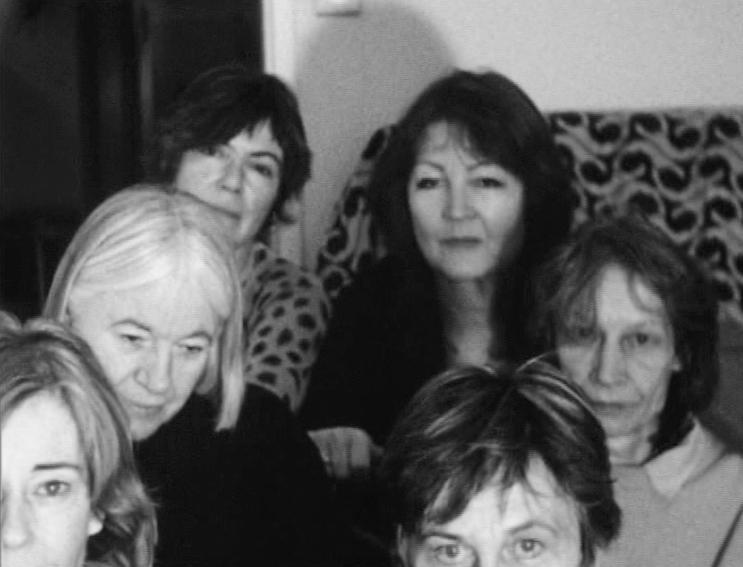Hen Night
Five older women, loosely grouped in two rows, gaze into the camera. At times only details of their faces can be seen, a sixth woman walks through the picture, joins the others. The image flickers briefly, disappears, and the scene begins again from the start, this time with a slightly displaced camera perspective.
Friedl vom Gröller´s (Friedl Kubelka´s pseudonym) short, silent black-and-white film Hen Night, created on the occasion of the artist´s upcoming wedding, portrays the six women in the state of least possible movement - the reverse, so to speak, of Kubelka´s photographic process in which she fabricates individual photographic portraits over the course of days, weeks, months, and years, capturing the process of time in the changes in the portrayed person.
In Hen Night, the camera initially remains with the group and subsequently takes each individual into focus: a cinematic snapshot, in which the moment of time is nonetheless inscribed in the women´s faces. Hen Night refrains from an external plot, which is precisely what turns it into the stage for a staged event, which is characterized more by the interaction between the portrayed persons and the camera, which at times resembles a subtle battle, than through the relationship of the women to each other. Captured head-on by the camera, the women reciprocate its "gaze," some self-confidently, some skeptically, and not all of them can hold out; yielding for a brief moment in little side plots, for example, when one of the women sniffs at a little bottle.
Kubelka captures the women´s ambivalent emotions on camera. And the presence of the camera, which technical "errors," such as the repetition of the opening shot or the camera´s shaking make us particularly aware, makes it impossible to forget that inherent to the relationship camera-portrait subject is always an inauthentic, constructed moment; that the borders between identity, pose, and staging are permeable.
(Astrid Wege)
Translation: Lisa Rosenblatt
The setting is simple: a group picture with six elderly women arranged in two rows, everyone looks into the camera. One of them sniffs at a vial. The occasion for the film’s production was Kubelka’s upcoming wedding. Hen Night shows friends’ reactions, which are expressed pointedly in their faces. Faces, as is well known, are able to tell stories.
(Dietmar Schwärzler)
"DEAR DIARY" TORONTO'S WAVELENGTHS 6: FLASH POINT CAMERA posted by Livia Bloom (Critique)
posted by Livia Bloom @ 9/20/2009 10:30:00 PM
Not all moviemaking requires that type of time commitment, however. The films I found most striking in the 2009 Toronto International Film Festival (along with Werner Herzogs inspired feature Bad Lieutenant: Port of Call: New Orleans) were two short works by British-born artist Friedl vom Gröller (aka Friedl Kubelka). A remarkable still photographer, Kubelkas eye for detail and portraiture shines in her 16mm cinema work. Polterabend (Hen Night) is a tiny film that she photographed just prior to her wedding. It depicts six women who watch the camera and the audience, and who are watched by us in return. Initially, the group stares together; later they stare in individual blinking portraits.
In her on-stage introduction, Kubelka emphasized the ease with which her films are created they are shot on 3-minute reels and use only in-camera editing and encouraged audience members who might be intimidated by filmmaking not to be afraid to pick up a camera. The seeming simplicity of Kubelka's work is its strength, and Polterabend exhibits a mesmerizing power. It goes beyond the familiar portraiture found in generations of frozen paintings by including subjects's fidgets and ticks, and proves itself a perfect illustration of moving image medium specificity.
Passage Briare records Kubelkas flirtatious encounter with a mysterious man; she comes to sit beside him as they are filmed by her camera. Despite the brevity of the piece again only 3-minutes, the length of a single film magazine the chemistry between the pair is palpable. The way they gaze at each other and at the camera is lively and enticing. Passage Briare records a tiny playful and intimate interlude that is a joy to behold.
http://www.filmmakermagazine.com/blog/2009/09/dear-diary-torontos-wavelengths-4-flash.php

